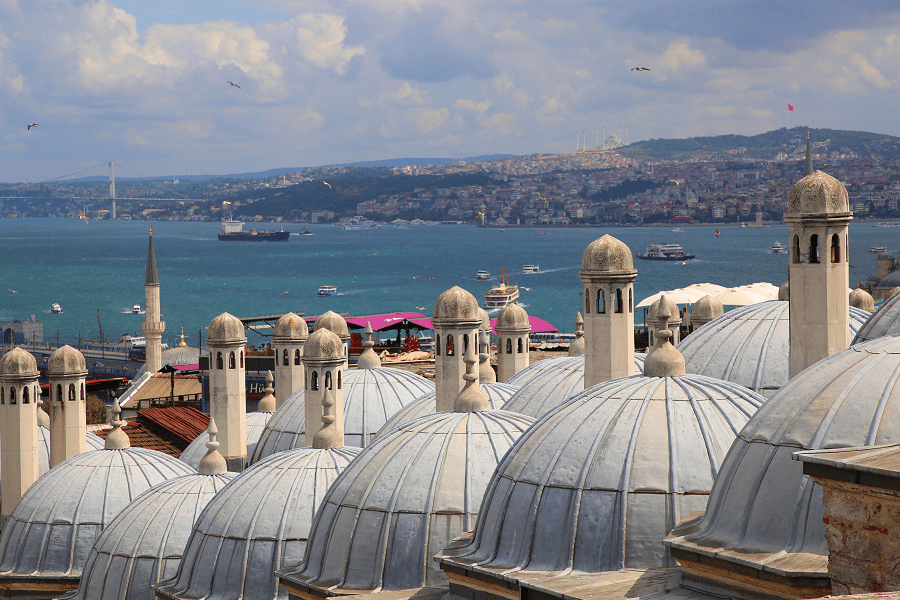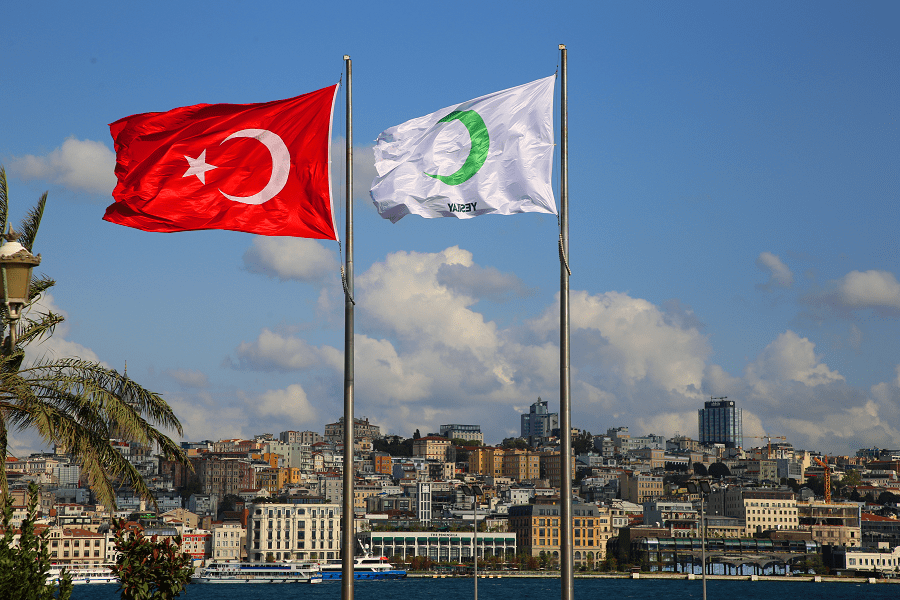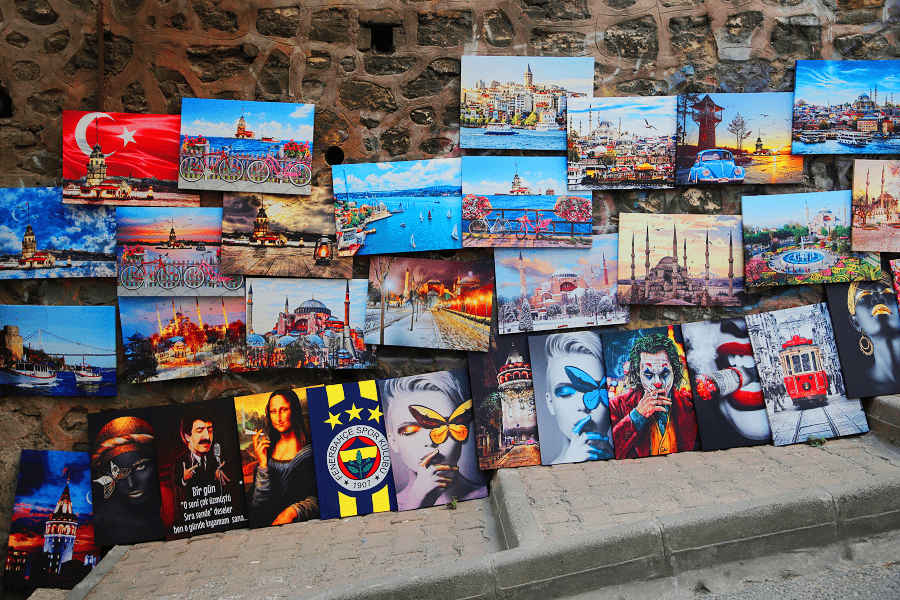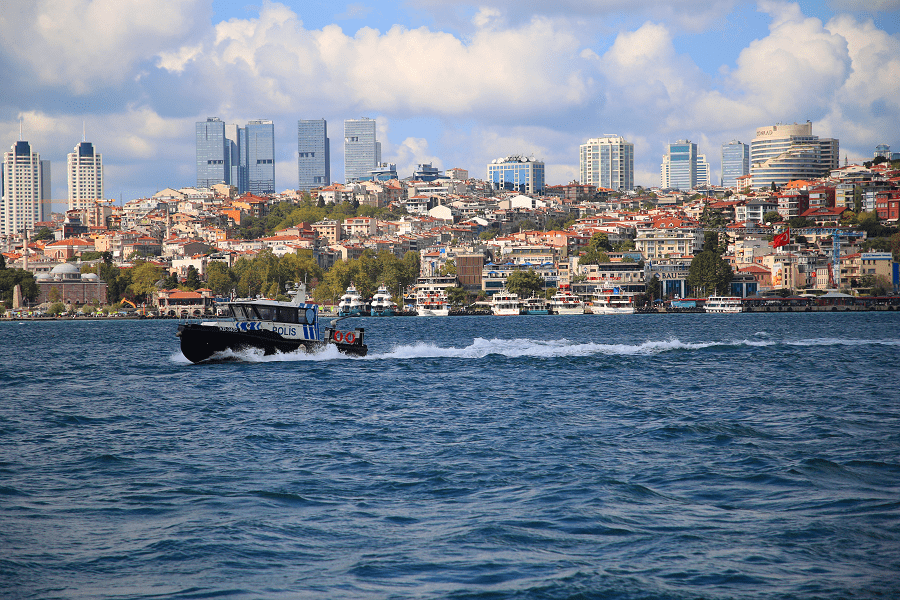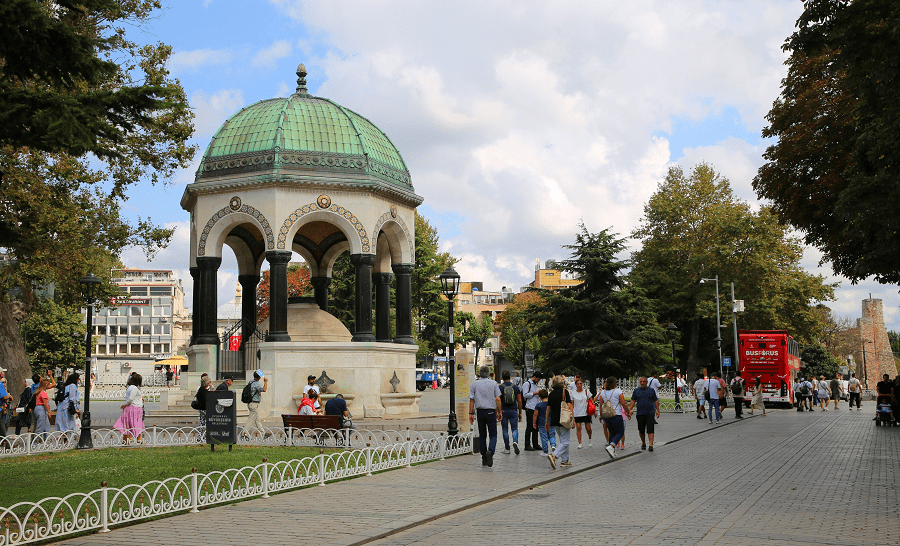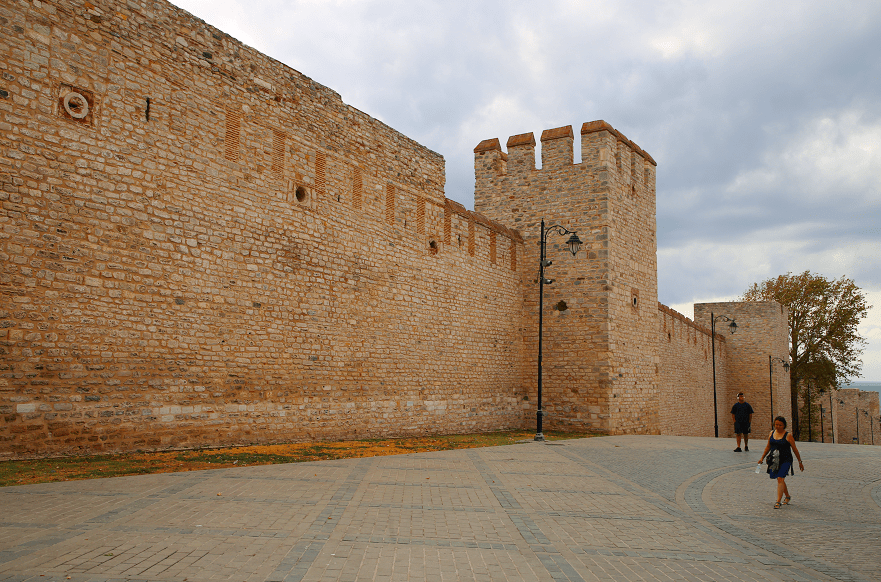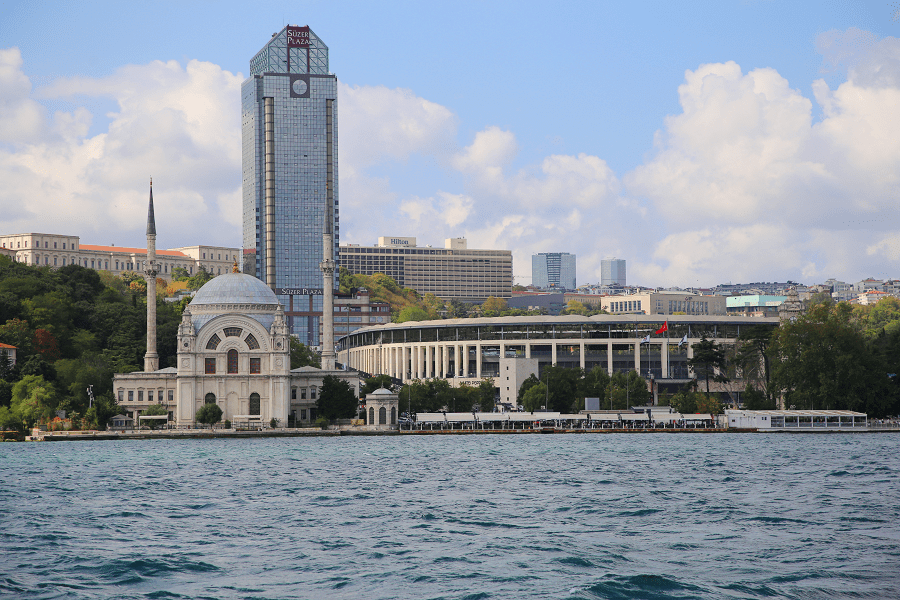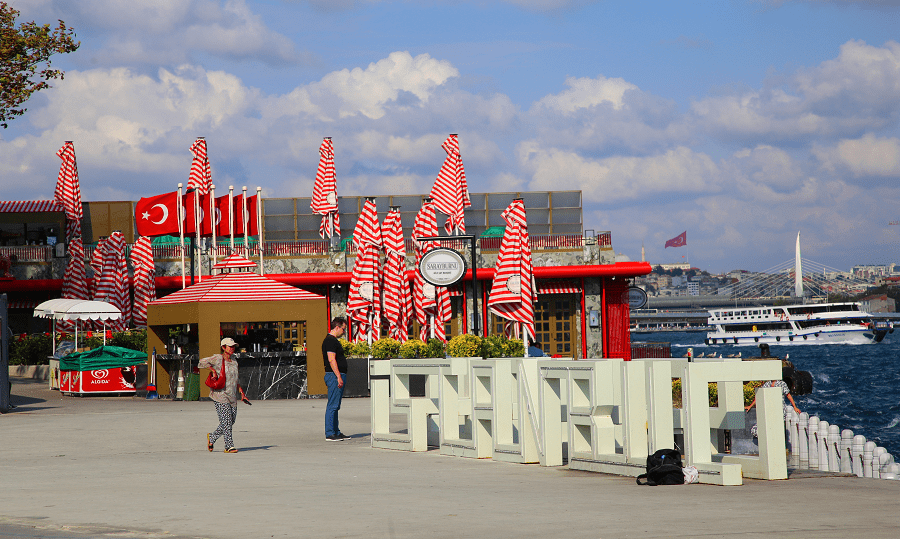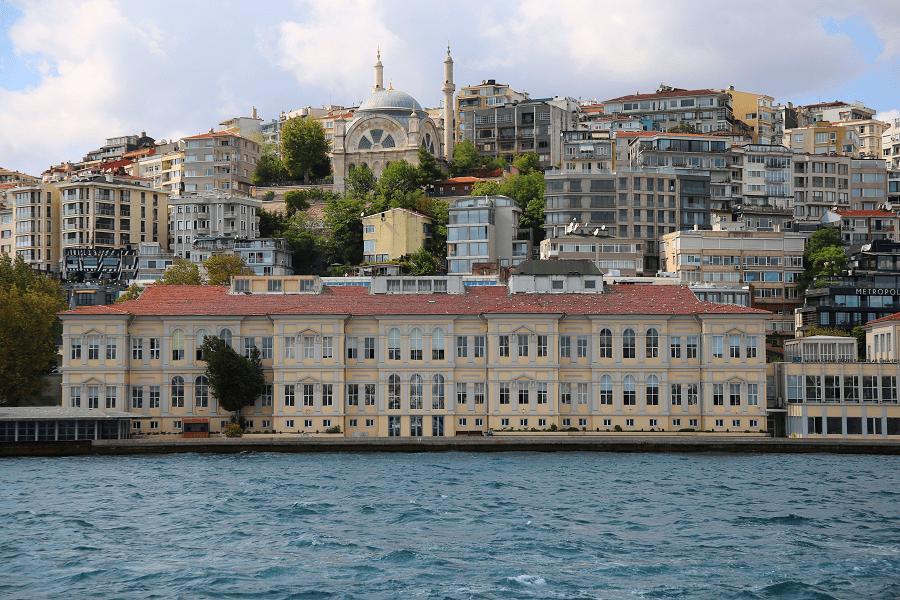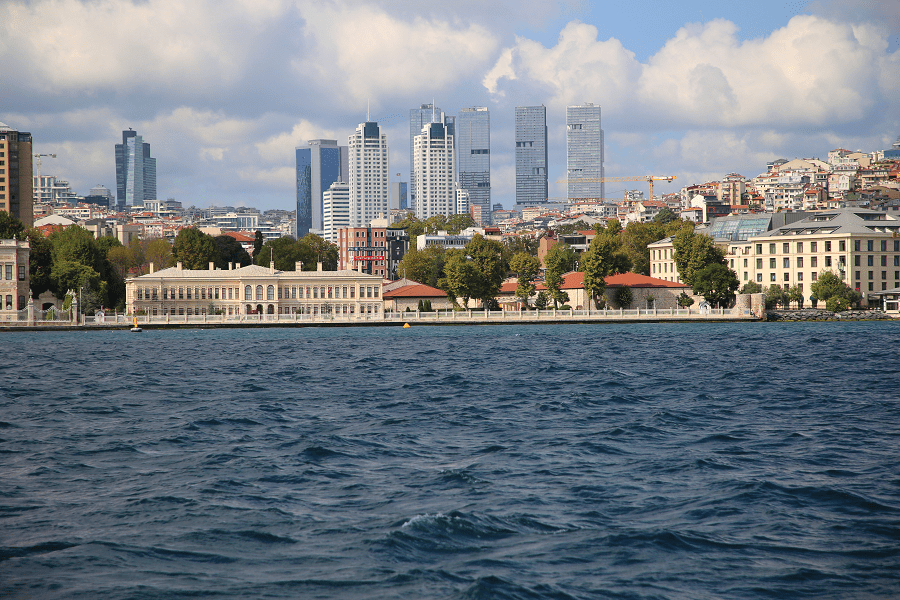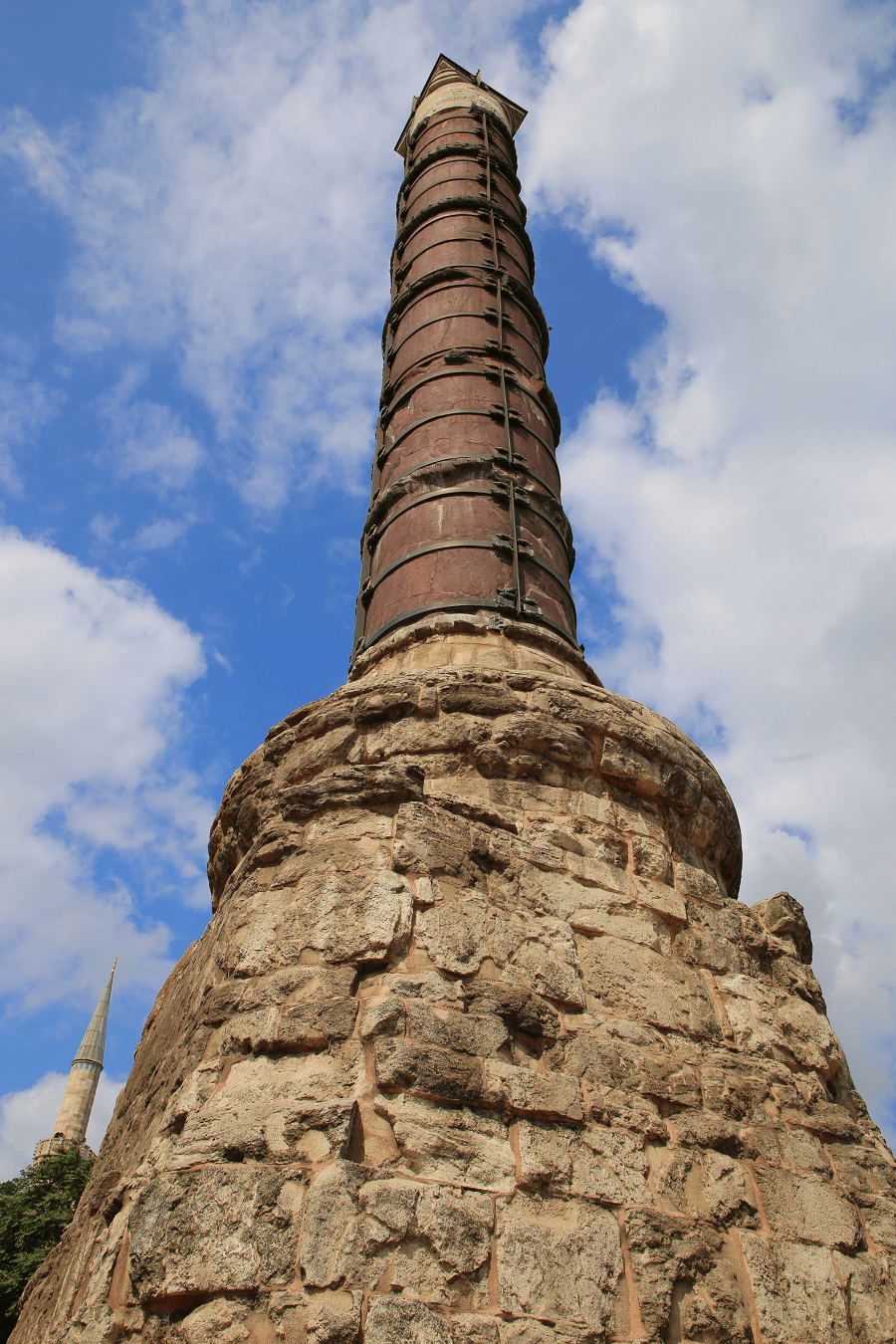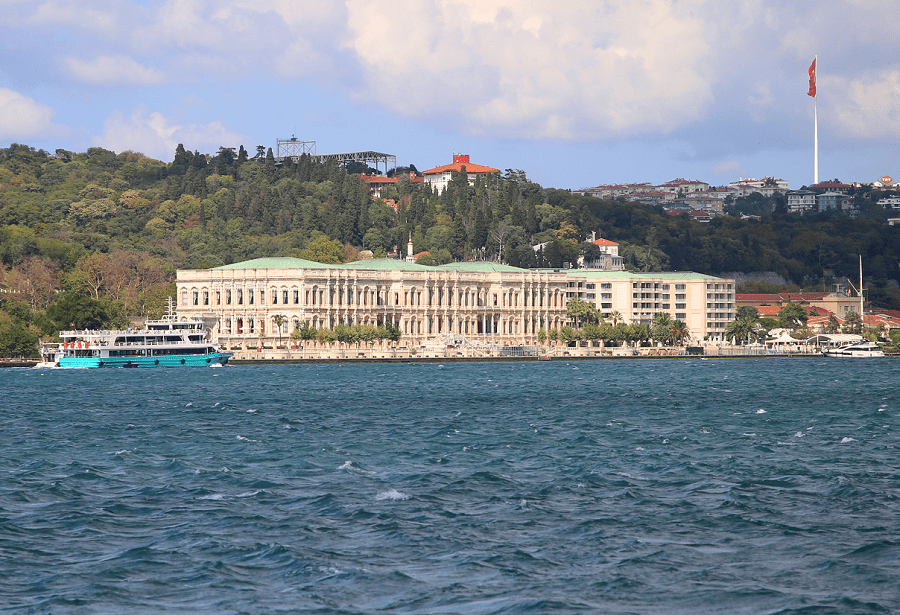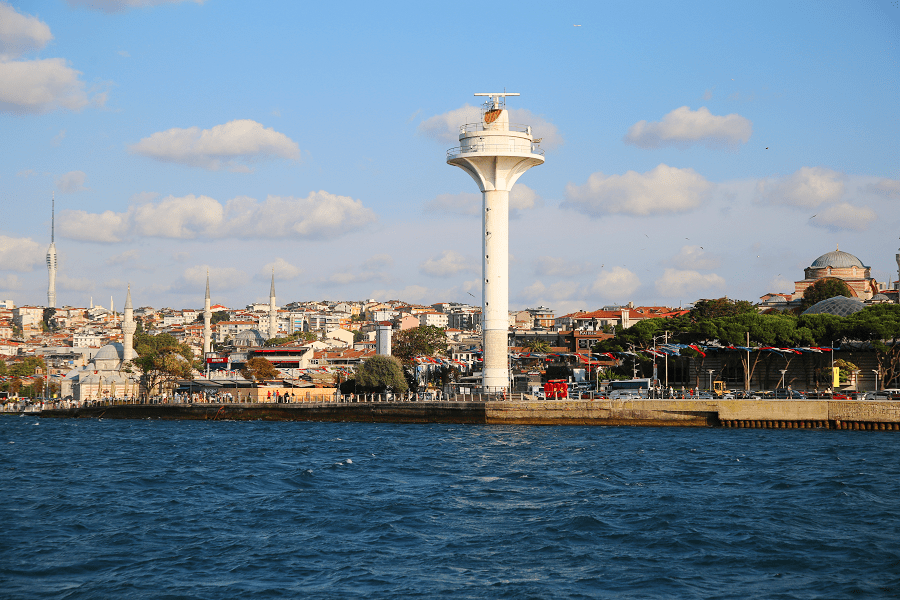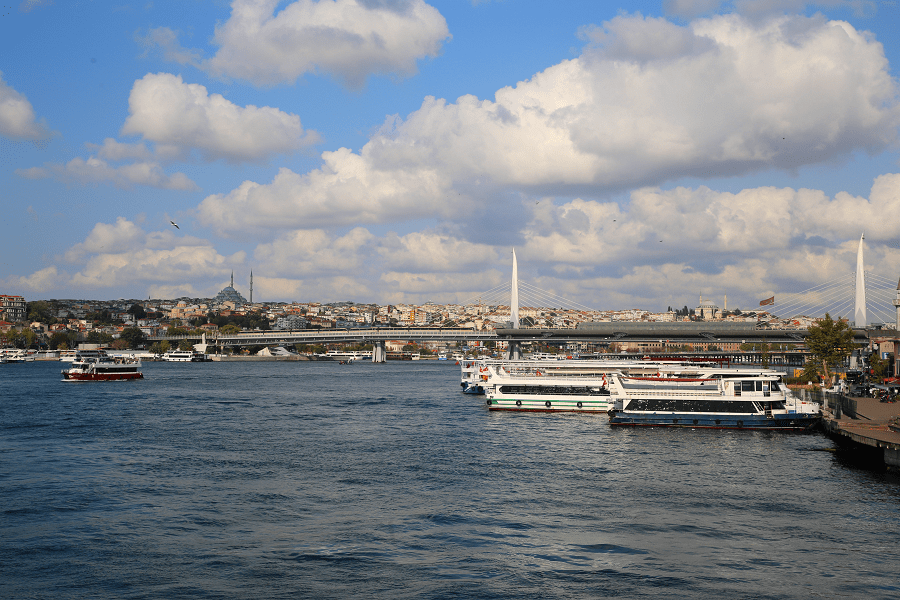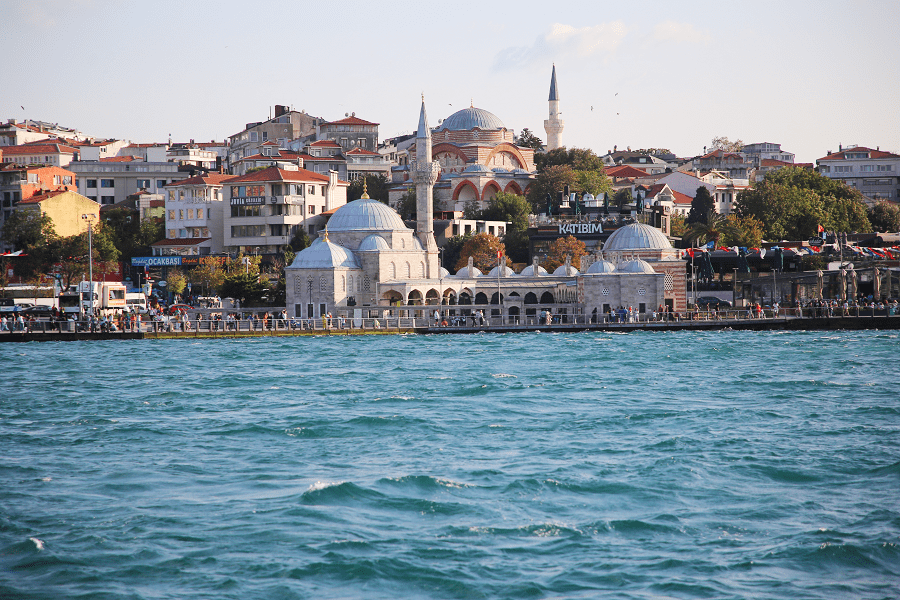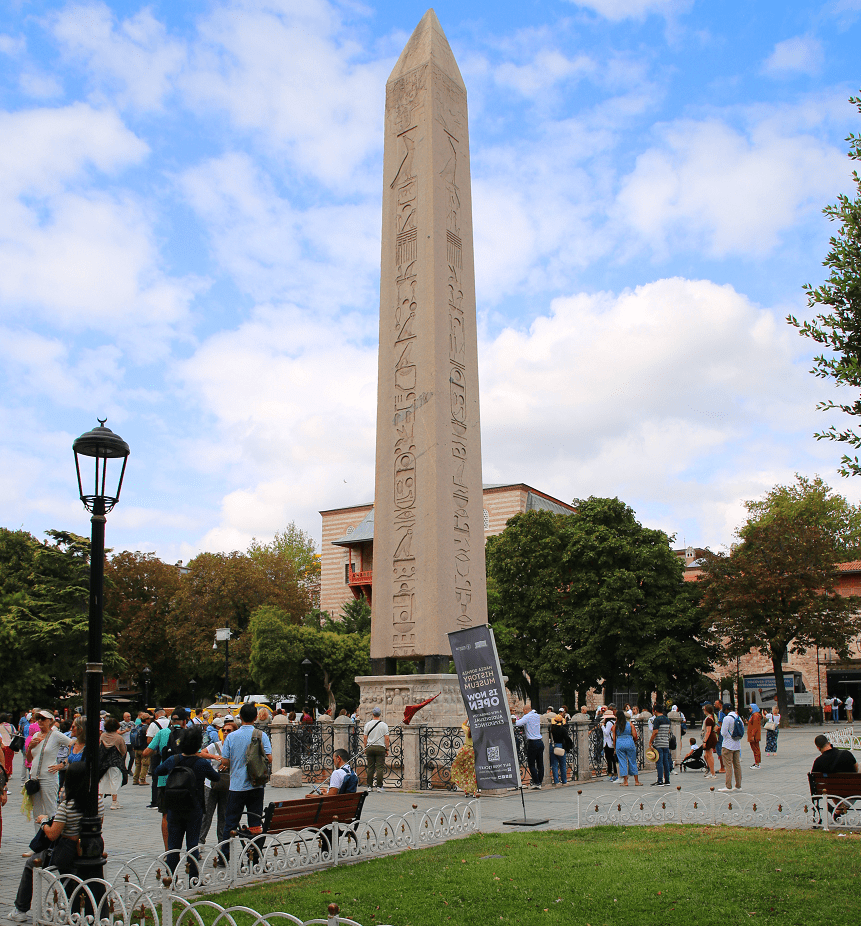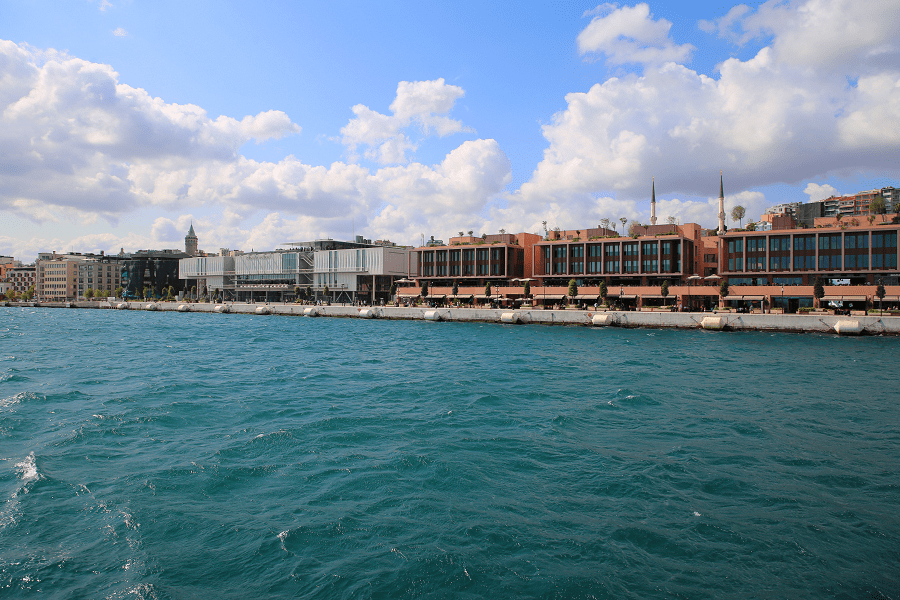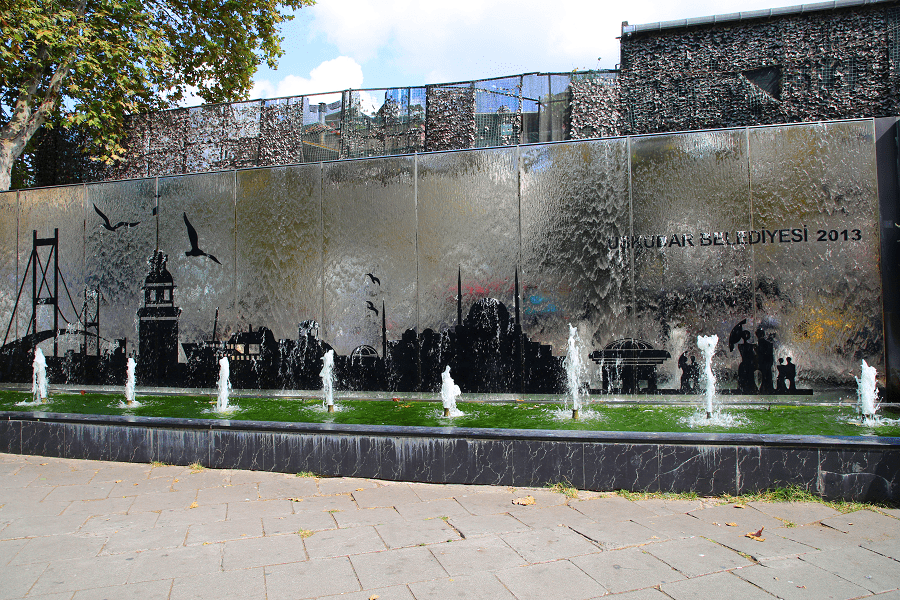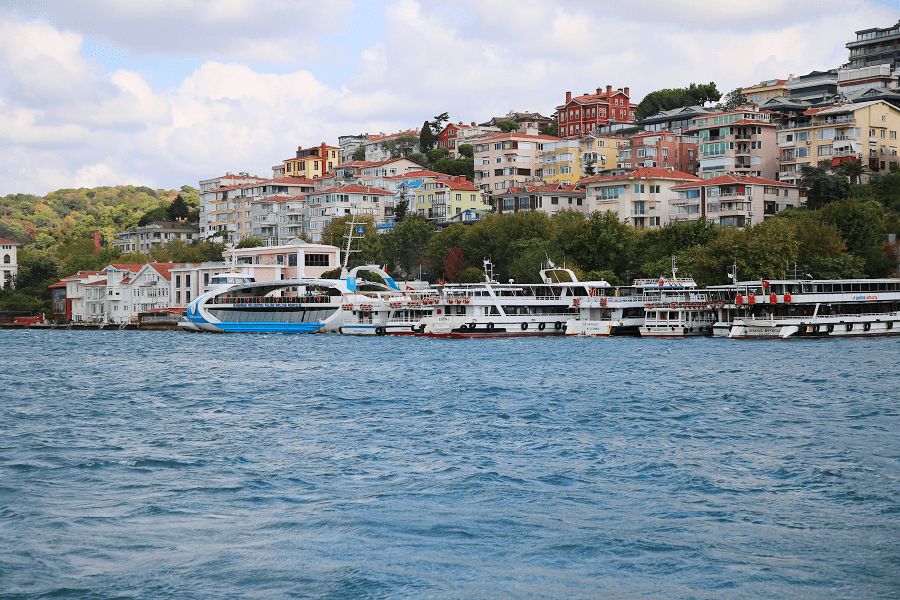Istanbul, formerly known as Constantinople, is the largest city in Turkey and serves as the country’s economic, cultural, and historic hub. The city straddles the Bosporus Strait, lying in both Europe and Asia, and has a population of over 15 million residents, comprising 19% of the population of Turkey. Istanbul is the most populous European city and the world’s 15th largest city.
Istanbul was established in the northwest of Turkey along the Marmara coast and the Bosphorus, surrounding the Golden Horn. Istanbul is an intercontinental city straddling the European Side or Rumelian Side and the Asian side known as the Anatolian Side or Asian Side. Its western border was first established on a peninsula surrounded by the Marmara Sea, the Bosphorus, and the Golden Horn and the Istanbul Walls surrounded the three sides. The city was expanded 4 times by moving the walls further west each time during the development and growth process, and incorporated 39 districts. There are a total of 40 municipalities within its borders, including the metropolitan municipality.
As one of the oldest cities in the world, Istanbul was dominated by the Roman Empire between 330-395 AD, the Byzantine Empire between 395-1204 AD, the Latin Empire between 1204-1261 AD, the Byzantine Empire again between 1261-1453 AD and finally the Ottoman Empire between 1453-1922 AD. In addition, Istanbul became the center of the Islamic starting in 1517, when the Caliphate passed to the Ottoman Empire until 1924 when it was abolished.
Important information about human history has been obtained through archaeological findings unearthed in recent years. Stone tools unearthed from Yarımburgaz Cave revealed that primitive human traces date back 400,000 years. Excavations and related research carried out on the Anatolian Side have shown that the first settled human community based on agriculture and animal husbandry in the city was the Fikirtepe Culture, dating back to 5500 BC.
These archaeological findings are the oldest human traces – not only in Istanbul but in the entire Marmara Region. The first settlements on a city basis within the borders of Istanbul are Chalcedon on the Anatolian Side; it is Byzantian on the European Side. Istanbul, which served as the capital of the states under its sovereignty for hundreds of years before the Republic period, lost this feature when the capital was moved to Ankara on October 13, 1923. However, it continued to be the country’s trade, industry, transportation, tourism, education, cultural and art epicenter.
Istanbul has a very high geopolitical importance, as it hosts the Bosphorus, which connects the Black Sea and the Marmara Sea and separates Asia and Europe.
Because of these features, there have been long-term sovereignty disputes and wars over the territory of the region. The main rivers are Riva, Kâğıthane, and Alibey streams. The province’s territory is slightly rugged and its highest point is Aydos Hill in Kartal district. The main natural lakes in the province are Büyükçekmece, Küçükçekmece, and Durusu lakes. Transitional characteristics between the Black Sea and Mediterranean macro climates are observed in the province and its immediate surroundings. Air temperatures and rainfall averages are erratic, making vegetation and farming unbalanced.
Muslims constitute the largest religious group in the city. In addition, the most populous sect of Muslims is Sunnis, followed by Alevis. According to the census in 2007, the total number of mosques in the city is 2,994. Istanbul became the last center of the Islamic Caliphate. The caliphate, which started with Yavuz Sultan Selim in 1517, ended with Abdülmecid on March 3, 1924.
On September 2, 1925, lodges were closed and sects were banned. Thus, the secular system began in the country and the city most affected by this change was Istanbul. Immediately after the abolition of the Caliphate, the Presidency of Religious Affairs was established. The Shaykh al-Islams, who had the highest authority during the Ottoman Empire, were replaced by the President of Religious Affairs.
Tourism
Istanbul is one of the popular tourism centers due to its history, abundance of monuments and works, and its location on the Bosphorus. The largest share among tourists belongs to Germans. Germans are followed by Russians, Americans, Italians and French. 9 million 25 thousand tourists came to the city in 2021. It is possible to find hotels suitable for every budget in Istanbul. There are more than 1180 hotels, from 5-star chain hotels to boutique family-run hotels. In recent years, world-famous chain hotels have shown great interest in Istanbul.
It is possible to encounter historical artifacts from various periods of history in almost every region of Istanbul, which has been home to different human communities for thousands of years. Among the thousands of historical artifacts recorded in the inventories are city walls, palaces, pavilions, mosques, churches, synagogues, fountains and mansions.
According to 2023 statistics, Istanbul is the city that hosts the most tourists after Antalya. The number of tourists entering the province by air, land and sea in 2009 was slightly over 7.5 million. Among these, Germans are in first place with a share of 13.1%, and Russians are in second place with a share of 6.7%. The first tourist group hosted by Istanbul came to visit the General Osmani Exhibition in 1863. Later, as Istanbul was connected to Europe by railway, the number of tourists increased further, and Istanbul’s first hotel, Pera Palas, was established to meet the increasing accommodation demand.
There are about 370 accommodation and 400 entertainment facilities with operating certificates in Istanbul. There are many museums in Istanbul, including private museums. In 2009, 6,179,556 people visited state museums alone. Among the places visited, Topkapı Palace took the lead with 2,932,429 people, followed by Hagia Sophia Museum with 2,444,956 people. Fatih district (Historical peninsula), which is the historical center of Istanbul, and the settlements around the Golden Horn, Beyoğlu and Eyüpsultan; Beşiktaş and Sarıyer on the Bosphorus; Kadıköy, Üsküdar and Adalar districts on the Anatolian Side are among the rich centers of Istanbul in terms of historical tourism. For nature tourism, there are interesting addresses in Beykoz, Şile, Adalar and Sarıyer.
Main sights (TOP 25 must see, in alphabetical order)
Aqueduct of Valens
Bozdoğan Aqueduct (Bozdoğan Kemeri), also known as the Valens Aqueduct, is an aqueduct built by the Romans. It was completed by Roman Emperor Valens in the late 4th century. The aqueduct, which was restored by Ottoman Sultans in different periods, is one of the important historical monuments of the city. It is one of the most important aqueducts that met the water needs of the city in the Middle Ages.The exact date that construction on the aqueduct began is uncertain, but it was completed in 368 AD during the reign of Valens, whose name it bears. More …
Bayezid II Mosque
Bayezid Mosque (also known as Beyazıt Mosque and Beyazıd Mosque) is located in the Beyazıt district of Istanbul, built by Sultan II Bayezid. It is a building among the early works of Ottoman classical architecture. It is unknown exactly who the architect was, but there are opinions that it was built by architect Hayrettin, architect Kemaleddin, or Yakupşah bin Sultanşah. It is considered to be the oldest sultan mosque in Istanbul,which preserves its originality. Sultan II Bayezid’s tomb is located in the graveyard of the mosque. More …
Beyazıt Square
It is a historical square located in the historical peninsula. It is home to Istanbul University and the historical Grand Bazaar. The square, which also includes the Beyazıt Mosque, is a frequent destination for tourists. More …
Blue Mosque
Sultan Ahmet Mosque, or Sultânahmed Mosque, was built by the Ottoman Sultan Ahmed I between 1609 and 1617, on the historical peninsula in Istanbul, by the architect Sedefkâr Mehmed Ağa. It is called the “Blue Mosque” by Europeans because it is decorated with blue, green and white Iznik tiles, and the interior of its semi-domes and large dome are adorned with mostly blue hand-drawn works. When Hagia Sophia was converted from a mosque to a museum in 1935, it became the principal mosque of Istanbul. More …
Bosphorus Bridge
The Bosphorus Bridge, known officially as the July 15 Martyrs Bridge, and colloquially as the First Bridge (Birinci Köprü), is the southernmost of the three suspension bridges spanning the Bosphorus strait (Boğaziçi) in Istanbul, Turkey, thus connecting Europe and Asia (alongside Fatih Sultan Mehmet Bridge and Yavuz Sultan Selim Bridge). The bridge extends between Ortaköy (in Europe) and Beylerbeyi (in Asia). More …
Dolmabahçe Clock Tower
Dolmabahçe Clock Tower is the clock tower located between Bezmi Alem Valide Sultan Mosque and Dolmabahçe Palace. It was built between 1890 and 1895 by Abdulhamid II in neo-baroque and Empire style. The tower, which is 27 meters high and has 4 floors and 94 steps. The floors of the staircase landings were made with colorful stones and geometric shapes. More …
Dolmabahçe Mosque
The Dolmabahçe Mosque a baroque waterside mosque in Kabataş in the Beyoğlu district, close to the Dolmabahçe Palace and Dolmabahçe Clock Tower. It was commissioned by Queen Mother Bezmialem Valide Sultan and designed by the Turkish Armenian architect, Garabet Balyan in 1855. After his mother’s death, Sultan Abdülmecid saw the building work through to completion. The mosque has twin minarets and is distinguished by the huge stone arches on its facades which are cut with large windows, allowing light to flood the interior. More …
Dolmabahce Palace
Dolmabahçe Palace is located on the coastline extending from Karaköy to Sarıyer, between Kabataş and Beşiktaş, on the left bank at the sea entrance to the Bosphorus from the Marmara Sea, opposite Üsküdar. It was named “Dolmabahçe” because it was built on the area created by taking land from the sea and filling it. For its construction, loans were taken from foreign states. The area where Dolmabahçe Palace is located today was a large bay on the Bosphorus where the Ottoman Admiral’s ships anchored until four centuries ago. This bay, where traditional maritime ceremonies were held, became a swamp over time. The bay, which started to be filled in the 17th century, was turned into a “private garden” for the rest and entertainment of the sultans. The collection of mansions and pavilions built in this garden in various periods was known as Beşiktaş Beach Palace for a long time. More …
Galata bridge
Galata Bridge is the bridge built on the Golden Hornl, connecting Karaköy and Eminönü. The first bridge connecting the Golden Horn, known as the “Galata Bridge”, was built in 1845. This bridge was renovated in 1863, 1875 and 1912.In the style of the First National Architectural Movement, the bridge, built in 1912, has become one of the city’s symbols. Galata Bridge, the city’s symbol, burned down in 1992 and was named “Historical Galata Bridge”. More …
Galata tower
It is a tower built in 528, located in the Galata district of Beyoğlu. You can enjoy a panoramic view of the city from the tower. It was built by the Byzantine emperor Anastasius. The tower, which was later largely destroyed by the 4th Crusades in 1204, was built as the Tower of Christ in 1348 by the Genoese as an addition to the Galata Walls. It is observed that the first three floors of the Galata Tower bear Genoese traces, while the following floors bear Ottoman traces. More …
Golden Horn Metro Bridge
Haliç Metro Bridge (Haliç Metro Köprüsü) is a tensioned inclined cable-stayed bridge located on the Golden Horn, providing the passage of the M2 metro line and with the Haliç metro station on it. The bridge, whose construction started on January 2, 2009 within the scope of the Taksim-Yenikapı extension of the M2 line, was put into service with the Yenikapı extension on February 15, 2014. The bridge, whose first project studies date back to the 1960s, provides the passage of the M2 metro line between Şişhane and the Golden Horn. The bridge has the ability to be opened and closed during ship passage. More …
Gülhane Park
Gülhane Park is a historical park located in the Eminönü district of Fatih. Alay Mansion is located between Topkapı Palace and Sarayburnu. Gülhane Park was the outer garden of Topkapı Palace during the Ottoman Empire and contained a grove and rose gardens. The Tanzimat Edict, which was the first concrete step of democratization in Turkish history, was read in Gülhane Park by the Minister of Foreign Affairs, Mustafa Reşit Pasha, during the reign of Abdulmecid on November 3, 1839, and therefore it is also called Gülhane Hatt-ı Hümayunu. More …
Hagia Sophia
Hagia Sophia, formerly known as the Church of Holy Wisdom and Hagia Sophia Museum or today officially known as Hagia Sophia-i Kebîr Câmi-i Şerîfi (Holy Great Hagia Sophia Mosque) is a mosque and former basilica, cathedral and museum. It was a basilica-planned patriarchal cathedral built by the Byzantine Emperor Justinian I in the old city center of Istanbul’s historical peninsula between 532 and 537. After the conquest of Istanbul by the Ottomans in 1453, Mehmed converted it into a mosque. More …
Istanbul Modern Art Museum
Istanbul Modern Art Museum, or simply Istanbul Modern, is a modern art museum established in 2004 in the Karaköy district. It is Turkey’s first modern and contemporary art museum. It is located between Mimar Sinan Fine Arts University and Tophane-i Amire Culture and Art Center. Founded by the Istanbul Foundation for Culture and Arts (İKSV) under the leadership of the Eczacıbaşı family, the museum was opened to visitors on December 11, 2004. More …
Maiden’s Tower
The Maiden’s Tower is a structure built on a small islet located off the coast of Salacak, in the Bosphorus close to the Marmara Sea. After the naval victory at Cyzicus, in 408 BC, the Athenian general Alcibiadis built a special station on a small rock in front of Üsküdar, probably for ships coming from the Black Sea. More …
Nuruosmaniye Mosque
Nuruosmaniye Mosque is the first baroque mosque in Istanbul. It is located in the Çemberlitaş district, at the entrance of the Grand Bazaar. It was built in 1748-1755. The mosque and its social complex, which emerged in a period when Westernization tendencies began to emerge in architecture, are considered a turning point in Ottoman architecture. More …
Pera Museum
Pera Museum is a private museum located in the Tepebaşı district. It was founded in 2005 by the Suna and İnan Kıraç Foundation to provide qualified and large-scale culture and arts services. It operates in a building that was designed as a contemporary and well-equipped museum by preserving the façade of the historical Bristol Hotel in Tepebaşı within the framework of the two-year project between 2003-2005 prepared by the restoration architect Sinan Genim. More …
Rahmi M. Koç Museum of equipment
Rahmi M. Koç Museum of equipment is an industrial museum on the banks of the Golden Horn estuary in the Hasköy district. The museum, which was opened in 1994 with the support of businessman Rahmi Koç, is the first museum in Turkey dedicated to the history of industry, transport and equipment. Most of the items exhibited in the museum are selected from Rahmi Koç’s private collection. Other objects are either borrowed from or donated by various organizations and individuals. More …
Sokollu Mehmed Pasha Mosque
Sokollu Mehmet Pasha Complex is a work of Mimar Sinan, located on the Martyr Mehmet Pasha slope in Kadırga, and consists of a mosque and a social complex. It is considered one of Sinan’s most beautiful works. It was built in 1571 on behalf of Sokollu Mehmet Pasha, who served as grand vizier to three sultans. More …
Süleymaniye Mosque
Süleymaniye Mosque (Süleymaniye Camii,) is an Ottoman imperial mosque located on the Third Hill. For 462 years, the Süleymaniye Mosque was the largest mosque in the city, until it was surpassed by the Çamlıca Mosque in 2019. The Süleymaniye Mosque is one of the best-known sights of Istanbul, and from its location on the Third Hill, it commands an extensive view of the city around the Golden Horn. Süleymaniye Mosque, described as the work of Mimar Sinan, was built as a part of the Süleymaniye Complex, consisting of madrasahs, a library, a hospital, a primary school, a bath, a soup kitchen, a cemetery and shops. More …
Taksim Mosque
Taksim Mosque is a mosque located in Taksim Square in the Beyoğlu district, designed by architects Şefik Birkiye and Selim Dalaman. The construction of the mosque started on February 9, 2017. It was opened for worship on Friday, May 28, 2021, with a ceremony attended by President Recep Tayyip Erdoğan after the Friday prayer. Before the ceremony, rose water was sprayed in Taksim Square. More …
Taksim Square
Taksim Square is a square located in the Beyoğlu district and is one of the most famous points of the city of Istanbul. It is one of the biggest tourist attraction centers of Istanbul with its surrounding restaurants, shops, hotels, entertainment and cultural places. Taksim Square, which became a square during the Republican Era, hosted many political and social events. Taksim Pedestrianization Project, which reduced the traffic in the square underground, was partially completed in 2013.
In the international design competition launched by Istanbul Metropolitan Municipality in February 2020, it was decided to reorganize Taksim Square according to the project that will come first with the votes of the people of Istanbul. More …
Theodosius Cistern
Şerefiye Cistern or Theodosius Cistern is one of the many Byzantine Period cisterns located in the Historical Peninsula in the Fatih district. It is located south of the building block bordered by Divan Yolu Street, Piyer Loti Street, Boyacı Ahmet Street and Dostluk Yurdu Street. Like the Basilica Cistern and the Binbirdirek Cistern, it is again open to the public, having been under restoration for eight years as of April 2018. An extraordinary laser show is included in the 30-minute excursion. More …
Topkapi Palace
Topkapi Palace is the oldest and largest palace in Istanbul that has survived to the present day in the world. Its location is the acropolis hill, which overlooks the Golden Horn, the Bosphorus and the Marmara Sea, and is the first founding place of Istanbul. It is a complex with 700,000 m2 of private land, at the farthest point of the historical Istanbul triangle peninsula, surrounded by 5 km long walls. Topkapı Palace, which resembles a small city rather than a palace with this feature, has been used for more than 500 years. Later, when the sultan moved to the newly built Dolmabahçe Palace, the palace was left neglected for a long time. The palace was restored to its former glory thanks to the restoration carried out during the Republican Era. The palace, which is currently used as a museum, exhibits items belonging to the sultan. Among the most valuable pieces of the museum collection are Muhammad’s cardigan, tooth, footprint and sword. These objects were brought from Cairo during the reign of Yavuz Sultan Selim. Another valuable piece is the world-famous Khashoggi Apple. Topkapı Dagger is another valuable item exhibited in the museum. More …
Valide Sultan Mosque
The New Mosque was built in 1597 by Sultan III. Its foundations were laid by the order of Murad’s wife, Safiye Sultan, and was built in 1665. It is a mosque that was completed and opened for worship with the great efforts and donations of Mehmed’s mother, Turhan Hatice Sultan. Contributing significantly to the city’s silhouette and visual aesthetic, the New Mosque is the last example of the large mosques built by the Ottoman family in Istanbul. More …
Transport
Istanbul has three large international airports, two of which currently serve commercial passenger flights. The largest is the new Istanbul Airport, opened in 2018 in the Arnavutköy district to the northwest of the city center on the European side, near the Black Sea coast.
Sabiha Gökçen International airport, 45 kilometers (28 mi) southeast of the city center, on the Asian side, was opened in 2001 to relieve the traffic at Atatürk.
Public transportation in Istanbul consists of various services such as suburban train, metro, tram, nostalgic tram, funicular, cable car, bus network, metrobus, ferry and sea bus, serving a population of more than 15 million that encompass an area of 5712 km. More …
Shortest distances to the main European cities
From Paris: 29 hr (2,805 km) via А1
From Madrid: 37 hr (3,537 km) via E70
From Andorra: 31 hr (2,960 km) via E70
From Monaco: 23 hr 39 min (2,260 km) via E70
From Moscow: 33 hr (2,412 km) via E101
From Bern: 24 hr (2,314 km) via E70
Shopping
The Grand Bazaar (Kapalıçarşı) is the largest bazaar and one of the oldest covered bazaars in the world, located in the center of Istanbul, in the middle of Beyazıt, Nuruosmaniye and Mercan districts. There are approximately 4,000 shops in the Grand Bazaar, and the total number of employees in these shops is approximately 25,000. It is said to house nearly 500,000 people at its busiest times during the day.
In 2014, it was ranked 1st among the most visited tourist attractions in the world, with 91,250,000 visitors. The Grand Bazaar is often called the world’s first shopping mall.
The second most popular place for shopping is the İstiklal Avenue. Istiklal Street, which is an indispensable place for foreign and local visitors to Istanbul, is always crowded at almost every hour of the day, except for the early morning hours. From world-famous brands to arcades selling cheap clothes, the street today is largely a complex of clothing stores in terms of shopping. Clothing, lingerie, accessories, bijouterie, bag and shoe shops constitute approximately half of the shopping areas on the street.
Cuisine
Istanbul’s culinary culture maintained a distinguished position in the Ottoman Empire. The cuisine of Istanbul, which flourished as it evolved around the culinary culture of the Ottoman court from the 15th century until the beginning of the 20th century, is the basis of contemporary Turkish cuisine. In addition to the court’s influence, Istanbul’s cuisine was influenced by various cultures that existed in the Ottoman state during its long history, the economic privileges of the capital and the court, and the multicultural population of the city. It carried traces of Central Asian Turkish, Anatolian Seljuk, medieval Arab-Persian, and Byzantine culture. In the 19th century, the cuisine of Istanbul had many aspects in common with Ottoman cuisine of the classical period, but also displayed differences. By the end of the century, new ingredients and cooking techniques were in use, and table manners and etiquette were changing. See here 77 best restaurants in Istanbul.
See also:
Metal installations of Istanbul
Main information
Area: 2,576.85 km2
Coordinates: 41°00′49″N 28°57′18″E
Population: 15,907,951
Languages: Turkish
Currency: Turkish lira
Time: GMT+3
Postal code: 34000 – 34 250
Area code: 212, 216
See also Pyrenees travel guide
See also France travel guide
See also Spain travel guide



